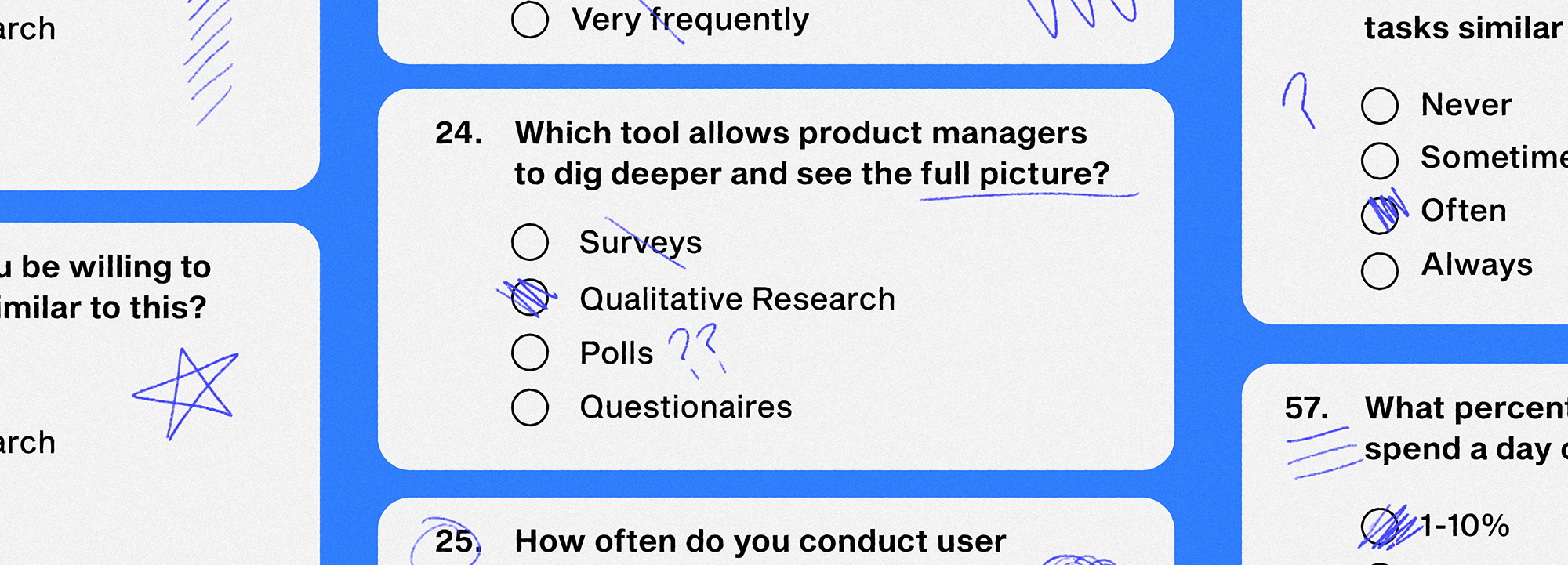
Part One: How Qualitative Research Can Make you a Better Product Manager
This is part one of a two-part series on using qualitative research to improve your product management skills.
One of a product manager’s most important tasks is research. It is our way of hearing from customers in every stage of product development, from idea to execution. And while quantitative feedback is important when you’re looking for validation and trends, a large part of a product manager’s work needs to be exploratory. And a product manager’s best tool to explore? Qualitative research.
Qualitative research provides the opportunity to dig deeper and see the entire picture. It gives context that you didn’t know you needed, and fills in gaps you may not have even known existed. Let’s dive into some of the other benefits of qualitative research.
You can go beyond the survey
Surveys are a great tool for researchers. They allow participants to easily answer a large number specific questions quickly. But don’t look for inspiration from your most recent Typeform. If research is like a coastline, surveys confine your view like a pair of binoculars: You can see far in one direction, but you might be missing something right outside your view.
Qualitative research gives your users the opportunity to go beyond scripted questions. It allows you to adapt to your unique user’s needs, and get answers to questions you might not have known to ask otherwise. By giving participants the room to go beyond specific questions, you can get context around why they think the way the do, and that why can give you inspiration that will better inform your decisions.
You can get into their environment
Observation is a powerful tool — over 65% of human communication is nonverbal. This is also true in the product world. Your research subjects may tell you that they use your product a certain way, but observation shows you things about them that they might not even realize they need to explain.
Ask users if you can watch them work within your product, accomplish tasks, and achieve goals. This is a useful way to recognize roadblocks, workarounds, or new opportunities to make your product more effective at serving users’ needs.
You can learn their world
While your product may feel like the most important thing to you, to your users it is likely just one piece of their busy day. That is why it is important to go beyond your product, and try to understand their world.
With qualitative research, you can take it a step further with questions about their goals and ideal state, so that you can see what gaps your product could fill that your user might not even recognize. You can also dig deeper into specific areas depending on your participant’s specific needs and goals, which helps to fill in all the cracks and get a complete picture of exactly how they use your product, where it fits in their workflow, and new opportunities to make your product even more valuable.
Product managers are responsible for advocating for users internally. Qualitative research is a valuable tool to get the entire picture so you can gain a deeper understanding of who your users are, what their goals are, and how your product fits in that bigger picture. While it isn’t the only tool in a researcher’s tool belt, it gives insights that quantitative research can’t provide.
Read part two here to learn what to do once you’ve collected qualitative research.



